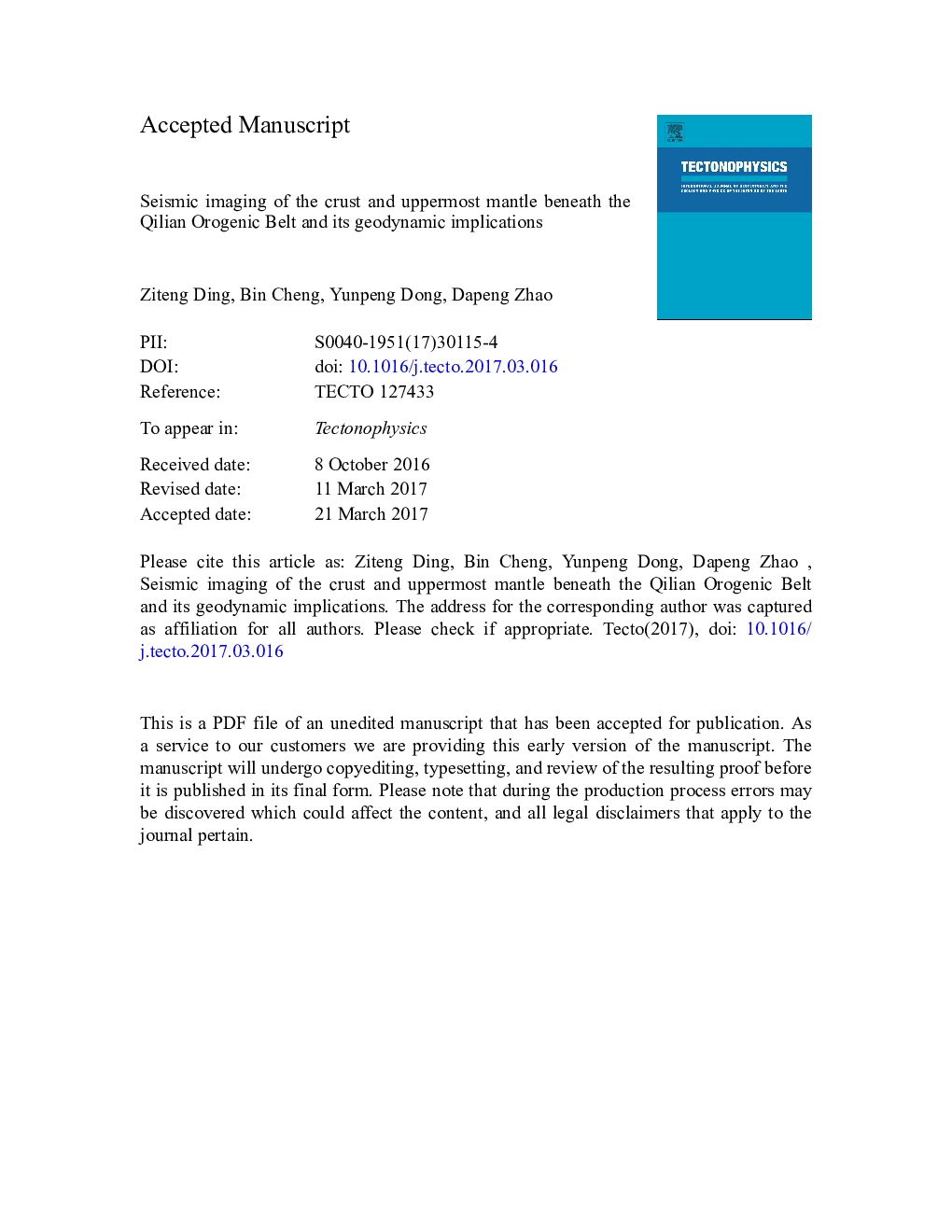| کد مقاله | کد نشریه | سال انتشار | مقاله انگلیسی | نسخه تمام متن |
|---|---|---|---|---|
| 5781628 | 1636699 | 2017 | 61 صفحه PDF | دانلود رایگان |
عنوان انگلیسی مقاله ISI
Seismic imaging of the crust and uppermost mantle beneath the Qilian Orogenic Belt and its geodynamic implications
دانلود مقاله + سفارش ترجمه
دانلود مقاله ISI انگلیسی
رایگان برای ایرانیان
کلمات کلیدی
موضوعات مرتبط
مهندسی و علوم پایه
علوم زمین و سیارات
فرآیندهای سطح زمین
پیش نمایش صفحه اول مقاله

چکیده انگلیسی
Three-dimensional (3-D) seismic velocity structure of the crust and uppermost mantle under the Qilian Orogenic Belt (QLOB) is important for better understanding the Cenozoic deformation mechanism of the QLOB and the deep tectonic relationship between the QLOB and the Alashan Block. We determined a detailed 3-D P and S wave velocity (Vp and Vs) model of the crust and uppermost mantle beneath the QLOB and its adjacent regions. The data set used in this study consists of 75,999 P wave and 72,178 S wave arrival times of 7485 local earthquakes recorded by 72 seismic stations in the study area during 2009 to 2015. Our tomographic results show obvious low-velocity (low-V) anomalies in the lower crust beneath the QLOB, and the low-V zones extend to the uppermost mantle beneath a few local areas. These features are interpreted as mechanically weakened zones caused by fluids and melt related to the northward extension of the Tibetan Plateau and local hot upwelling in the upper mantle. The weakened zones in the lower crust are capable of ductile flow on a geological timescale, and the intermittent distribution of the low-V zones indicates that the scale of the ductile flow is not very large. The obtained Vp and Vs images indicate southward subduction of the Alashan Block beneath the QLOB, which may result from the Indo-Eurasia collision. Large crustal earthquakes in the study region generally occurred along large fault zones where Vp and Vs change drastically over a short distance. Beneath source areas of the large earthquakes, low-V anomalies caused by fluids and melt exist widely in the lower crust and uppermost mantle. When the fluids migrate upward to the active faults in the upper crust, the fault zone friction is reduced and so large crustal earthquakes can be triggered.
ناشر
Database: Elsevier - ScienceDirect (ساینس دایرکت)
Journal: Tectonophysics - Volume 705, 9 May 2017, Pages 63-79
Journal: Tectonophysics - Volume 705, 9 May 2017, Pages 63-79
نویسندگان
Ziteng Ding, Bin Cheng, Yunpeng Dong, Dapeng Zhao,